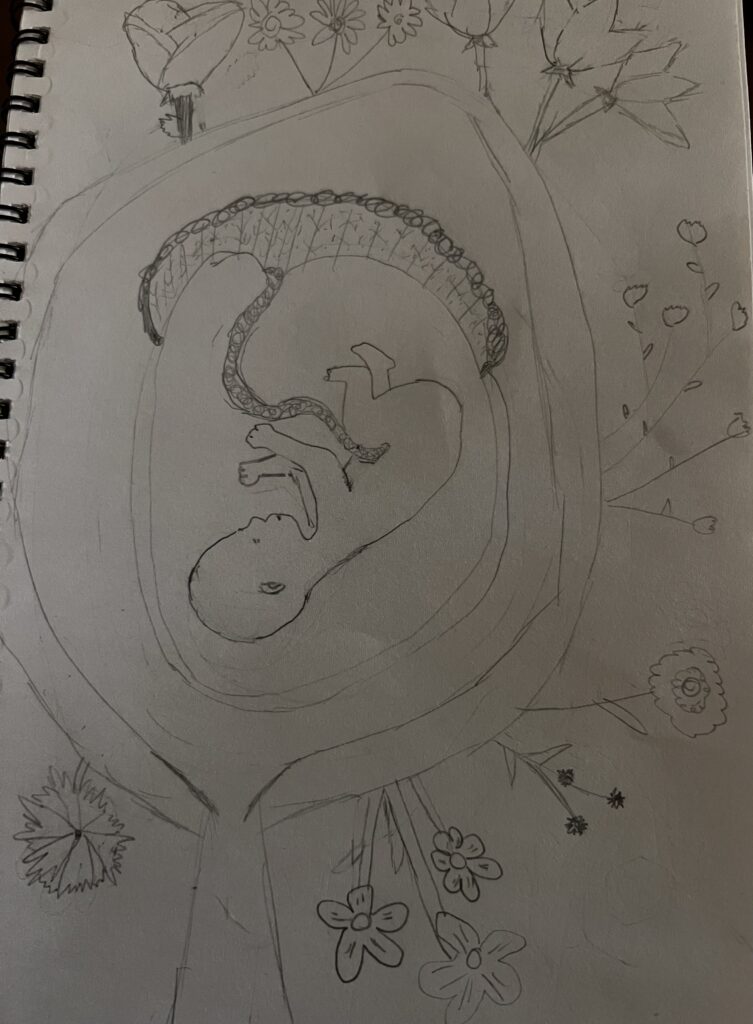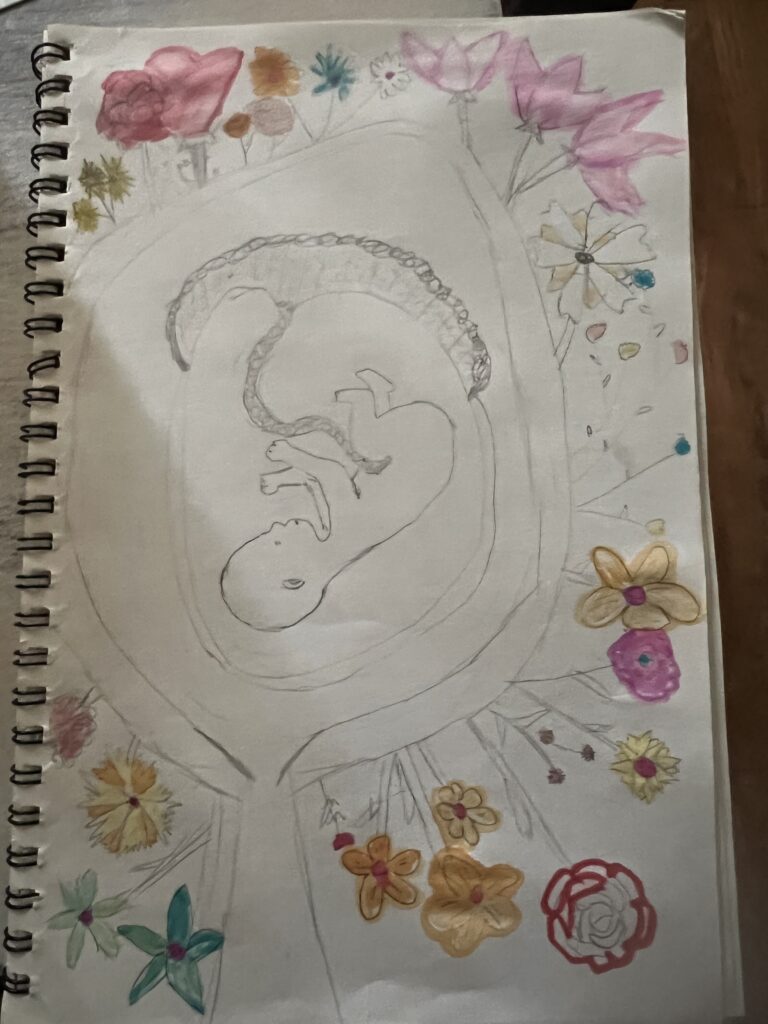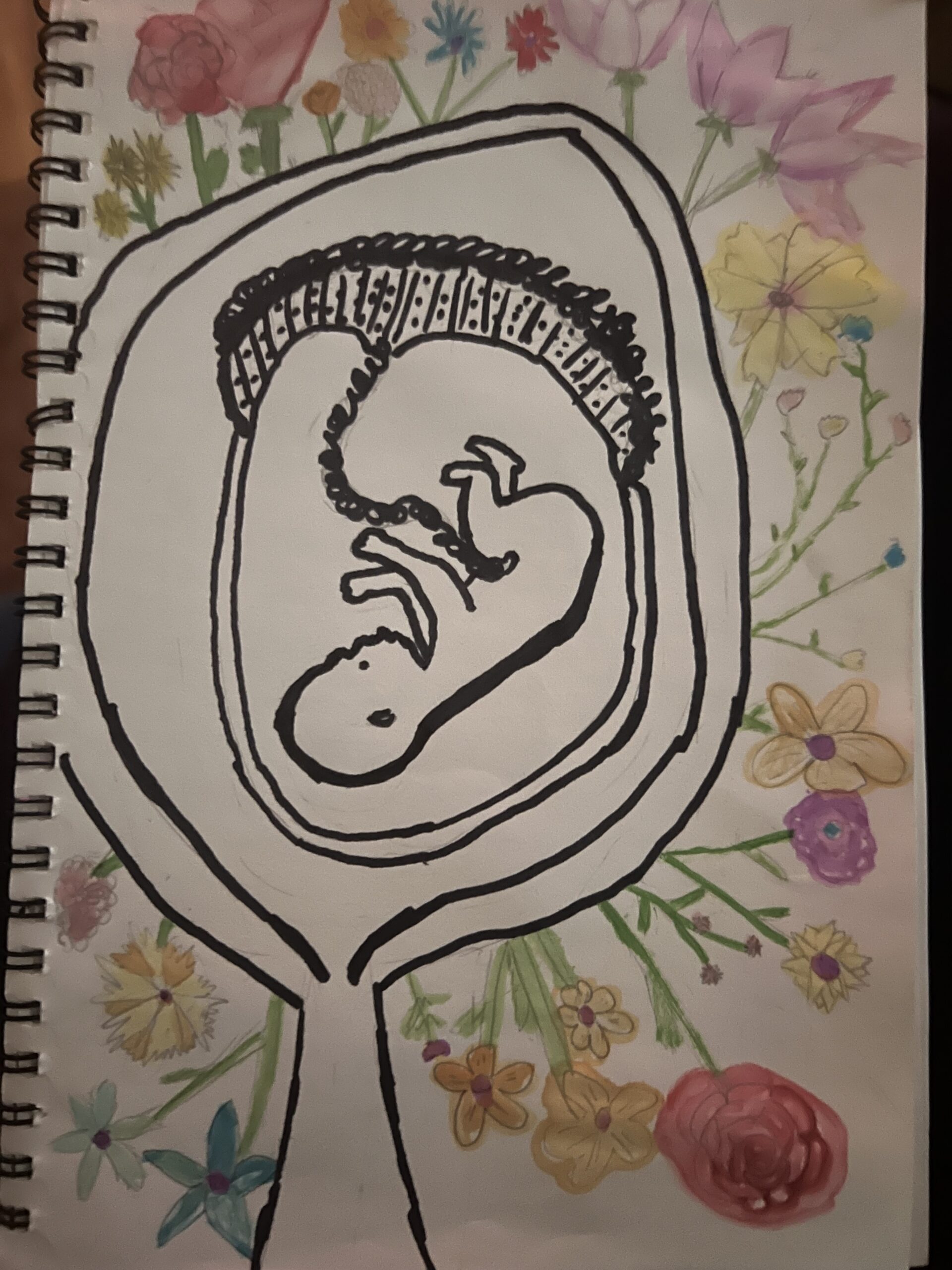The journey of pregnancy is an amazing experience. It is filled with anticipation and joy as new life begins to blossom in a woman’s womb. The art of life is not only a physical transformation but also a psychological transformation. Pregnancy involves significant changes in a woman’s body and mind, making self-care essential for both maternal and fetal well-being. This paper’s objective is to discuss the major steps in fetal development, to describe the role of the placenta and the function, and describe the psychological, hormonal and physical change during pregnancy. By also prioritizing self-care, expecting or, future mothers can help understand the steps for positive fetal development as well as proper care and ensure a healthy pregnancy.
The development of the fetus is valuable during pregnancy, it is a complex process that happens in major steps. The first step of this process is fertilization, this is where the sperm cells unite with the egg forming a zygote. Next is the cleavage stage, in this stage the zygote divides into tinner cells which are called blastomeres without, increasing the overall size of the embryo. This process results in the formation of a solid ball of cells called the morula. Mitosis is a serious process of cell division that is involved in the second step of fetal development. Mitosis is fundamental and ensures that the zygote separates and contributes to the growth and development of the embryo. Hopefully producing more cells that will differentiate into various tissue types in later stages of development. After this blastocyst formation occurs, this is where the morula develops into a hollow structure that implants into the uterine wall. Gastrulation is next and it establishes the three germ layers which are ectoderm, mesoderm, and endoderm. Gastrulation helps with the foundation of all the organ systems develop properly. Organogenesis happens after gastrulation this is where major organs develop, this happens usually around 3 to 8 weeks of gestation. Lastly is the fetal stage this stage lasts until birth, it begins the second trimester, during this stage the fetus prepares itself for life outside of the womb. (fetal develops. ACOG. (n.d.).
A critical factor in the well-being and health of the fetus is the placenta which is a temporary organ that forms during pregnancy. It is formed by the trophoblast layer of the developing blastocysts. It invades the uterine lining and gains the mother’s blood supply while facilitating nutrient and waste exchange (PLOS ONE). The placenta is fully formed by around month 3and is functional. The placenta’s function is to help with nutrient delivery and waste removal between the mother and fetus; it is essentially a lifeline, since it supplies the fetus with important nutrients while still filtering out harmful substances.
This is why it can be imperative for the mother and fetus to prioritize healthful habits throughout pregnancy. An example of this is consuming a nutritious diet rich in vitamins and beneficial minerals can positively impact both the placental function and the fetus development. Research has indicated that certain nutrients significantly contribute to fetal brain development. Omega-3 fatty acids, commonly found in fish with low mercury levels in the diet can aid in developing the baby’s brain while minimizing toxicity risks (CDC). Conversely, unhealthy habits such as drinking, smoking or other substance abuse, can negatively compromise a fetal well-being. Multiple studies have demonstrated a correlation between maternal smoking and adverse developmental outcomes in children. If the woman fails to take care of herself the placenta may not work properly and cause serious issues later on. (CDC)
The Placenta secretes estrogens, progesterone, and human chorionic gonadotropin (hCG). During pregnancy a woman’s hormones undergo drastic changes that affect the woman’s physical and mental health. One hormone that impacts pregnancy is Human chorionic gonadotropin or(hCG), this hormone is produced shortly after conception. The (hCG) hormone supports progesterone production. It is also thought to affect appetite regulation. Progesterone increases during pregnancy and promotes fat storage to provide energy for both the mother and the developing fetus, thus leading to weight gain. Levels of Estrogen rise throughout pregnancy, promotes uterine growth and prepares the body for lactation. Morning sickness is believed to be due to elevated levels of hCG, estrogen, and progesterone. Elevated levels of prolactin happen as a woman progresses in pregnancy. Estrogen promotes prolactin and enhances the breast tissue. Estrogen levels can also change during pregnancy and can impact the woman’s psychological mind set. Unfortunately, along with other factors in life this hormone is believed to cause depression when it fluctuates throughout pregnancy. (Hormones during pregnancy. Johns Hopkins Medicine. (2024, May 15). Hormonal fluctuations can lead to many emotional responses, such as mood swings, anxiety, and stress, which can ultimately impact overall health. Something that is crucial in hormonal change during pregnancy is to engage in relaxing activities, maintaining a healthy diet and gaining more calories to support the fetus, as well as seeking emotional help when needed.
Based on all of the studies it is clear it is essential while pregnant to take care of yourself, so you don’t run into any concerns or diseases. Postpartum depression happens after birth, but it can happen if the woman is experiencing health related issues, as well placental abruption, which can occur due to smoking or trauma and preeclampsia, chorioamnionitis, an infection of amniotic fluid and membranes, this happens due to poor hygiene practices or untreated infections( Levy M;Mor L;Kovo M;Schreiber L;Marfogel T;Bar J;Weiner E; (n.d.)These are only a few of several problems that could arise if the women do not maintain taking proper care of herself. It is essential for the mother to take care of herself to maintain a healthy fetal development, fetus, placenta, and her own happiness. Pregnancy can be very joyful and exciting but it’s important to take the proper steps to maintain a happy and healthy pregnancy. (CDC)
References
Center for Food Safety and Applied Nutrition. (n.d.). Advice about eating fish pregnant. U.S. Food and Drug Administration. https://www.fda.gov/food/consumers/advice-about-eating-fish
Centers for Disease Control and Prevention. (n.d.). Pregnancy. Centers for Disease Control and Prevention. https://www.cdc.gov/pregnancy/index.html
Eaton, M., Davies, A. H., Devine, J., Zhao, X., Simmons, D. G., Maríusdóttir, E., Natale, D. R. C., Matyas, J. R., Bering, E. A., Workentine, M. L., Hallgrimsson, B., & Cross, J. C. (n.d.). Complex patterns of cell growth in the placenta in normal pregnancy and as adaptations to maternal diet restriction. PLOS ONE. https://journals.plos.org/plosone/article?id=10.1371%2Fjournal.pone.0226735
fetal develops. ACOG. (n.d.). https://www.acog.org/
Hormones during pregnancy. Johns Hopkins Medicine. (2024, May 15). https://www.hopkinsmedicine.org/health/conditions-and-diseases/staying-healthy-during-pregnancy/hormones-during-pregnancy
Levy M;Mor L;Kovo M;Schreiber L;Marfogel T;Bar J;Weiner E; (n.d.). Histologic chorioamnionitis in pregnancies complicated by preeclampsia and the effect on neonatal outcomes. Reproductive sciences (Thousand Oaks, Calif.). https://pubmed.ncbi.nlm.nih.gov/33492649/




Above are photos that I drew and painted with watercolor. I used flowers to showcase that life is a part of nature and just like nature it is crucial to take care of things. The flowers represent growth and beauty of life if taken care of in the womb. For my project I first drew out a womb and fetus and then, I drew flowers painted them and went over with black paint and sharpie of the anatomy of the womb and fetus.
